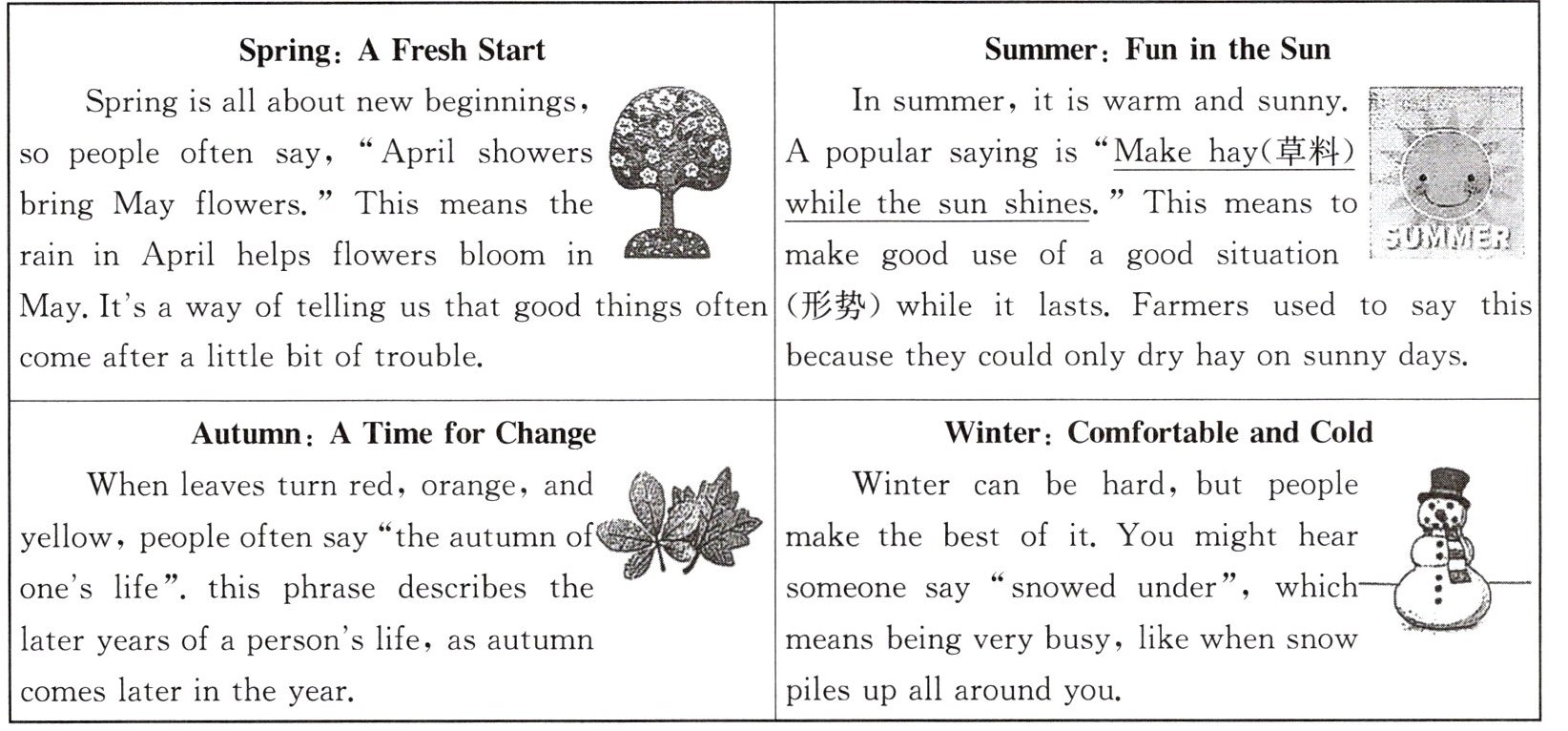五、阅读理解。
Every season brings special things—flowers in spring, sunshine in summer, colourful leaves in autumn, and snow in winter. People have created fun sayings and expressions about these seasons over the years. Let's get to know some of them!

(
D
)1. In which part of a magazine can we find this article?
A. History.
B. Health.
C. Technology.
D. Nature.
(
B
)2. What can you learn from the underlined sentence “Make hay(草料) while the sun shines”?
A. It is about working only in summer.
B. It teaches us to work when we have a chance.
C. It tells us to rest during sunny days.
D. It tells us to dry some grass in spring.
(
C
)3. What is the main idea of the article?
A. People should enjoy all the seasons.
B. Different seasons have their own weather.
C. Seasonal sayings help us understand life and nature.
D. Spring and summer are better than autumn and winter.
解析:
翻译:
五、阅读理解。
每个季节都会带来特别的事物——春天的花朵、夏天的阳光、秋天色彩斑斓的树叶以及冬天的雪花。多年来,人们围绕这些季节创造出了有趣的谚语和表达方式。让我们来了解其中的一些吧!
( )1. 我们能在杂志的哪个部分找到这篇文章?
A. 历史。
B. 健康。
C. 科技。
D. 自然。
( )2. 从划线句子“Make hay(草料) while the sun shines”中你能学到什么?
A. 它只与在夏天工作有关。
B. 它教导我们有机会时就要行动。
C. 它告诉我们在晴天要休息。
D. 它告诉我们在春天晒一些草。
( )3. 这篇文章的主旨是什么?
A. 人们应该享受所有的季节。
B. 不同的季节有各自的天气。
C. 季节性谚语帮助我们理解生活和自然。
D. 春天和夏天比秋天和冬天更好。